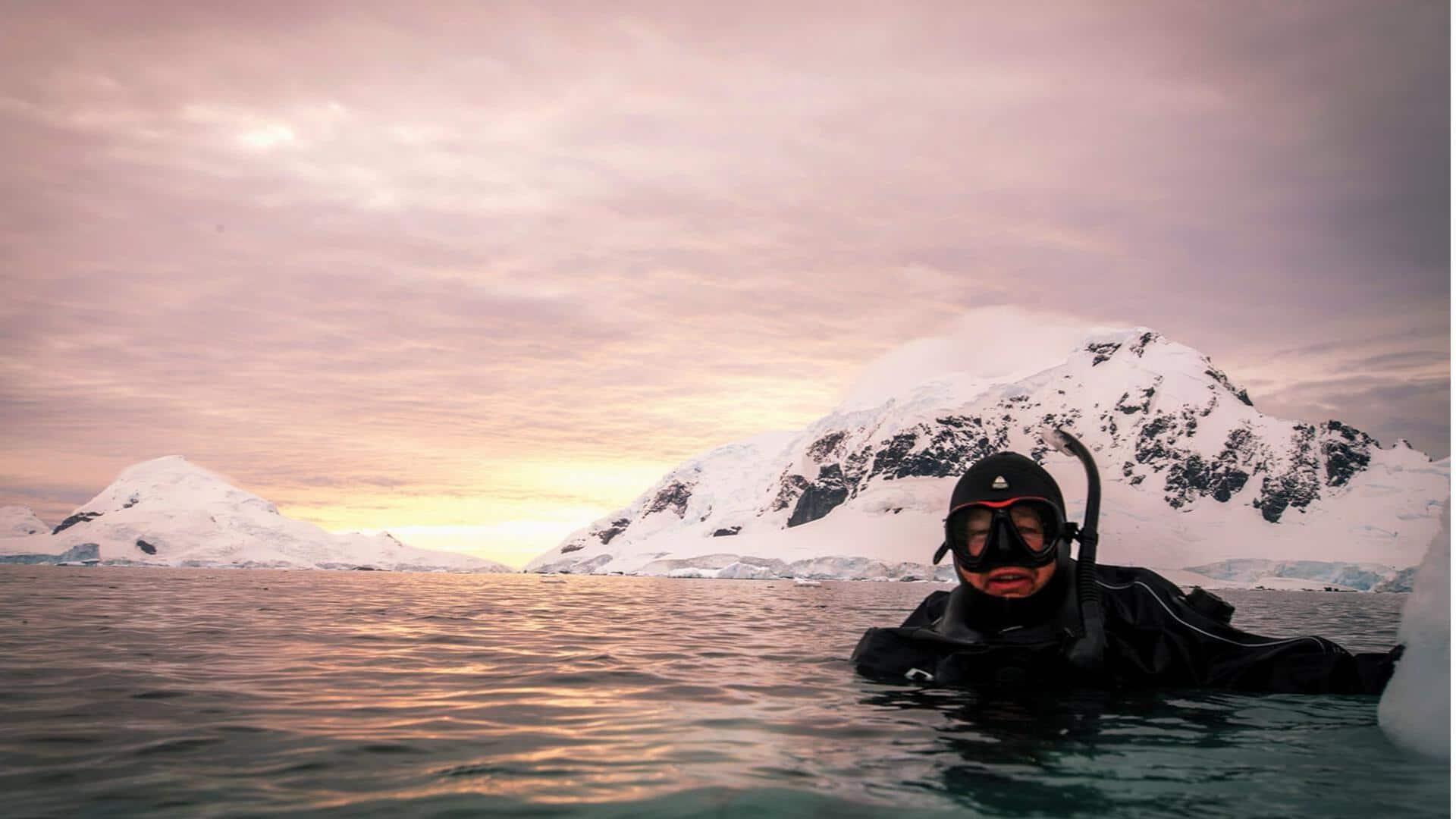
Polar snorkeling: Discovering Arctic marine life
What's the story
Polar snorkeling is the coolest (literally!) way to discover the Arctic's icy wonders. This ultimate adventure lets you dive in and swim with icebergs, check out the colorful critters that love the chilly water, and see the polar world like never before. Don't worry about the cold - top-notch wetsuits make this unforgettable experience possible for everyone.
Gear up
Essential gear for cold water snorkeling
To fully enjoy polar snorkeling, investing in high-quality cold-water equipment is key. A drysuit or a thick wetsuit, at least seven mm thick, is critical for shielding you from the icy waters. Neoprene gloves, boots, and a hood are essential for maintaining warmth in your extremities. Lastly, a quality mask, snorkel, and fins specifically designed for cold water will greatly improve your mobility and comfort during the adventure.
Dive spots
Best locations for polar snorkeling
The top three destinations for polar snorkeling are Svalbard in Norway, Disko Bay in Greenland, and Silfra Fissure in Iceland. Each destination has its own unique appeal: Svalbard offers encounters with seals and other marine life; Disko Bay is all about the thrill of snorkeling alongside huge icebergs; and Silfra Fissure offers the unique experience of exploring crystal-clear waters and dramatic underwater landscapes created by tectonic activity.
Marine life
What you'll see underwater
The Arctic's underwater world is teeming with life, as species have adapted to thrive in its icy waters. Snorkelers can expect to encounter various fish, jellyfish exhibiting a vibrant array of colors, sea anemones clinging to rocks and icebergs, and even seals exhibiting a natural curiosity toward their human visitors. The pristine clarity of the water also affords a breathtaking view of the unique flora adorning the seabed.
Stay safe
Safety tips for cold water snorkeling
Safety is of utmost importance in polar snorkeling. Never go alone; always have a buddy or better yet, join a guided group with experienced guides who are familiar with the local conditions and wildlife. Keeping a close eye on your body's response to the cold is vital; hypothermia can set in rapidly without the right gear or if you stay in the water too long without warming breaks.
Get ready
Preparing for your polar adventure
You need to be prepared before you decide to go polar snorkeling. Ideally, you should have some prior experience with snorkeling or diving. Handling equipment becomes trickier in the cold water environment. Being in good physical condition will also make the activity more enjoyable and safer. Strong swimming skills are required to navigate currents and potentially rough sea conditions.